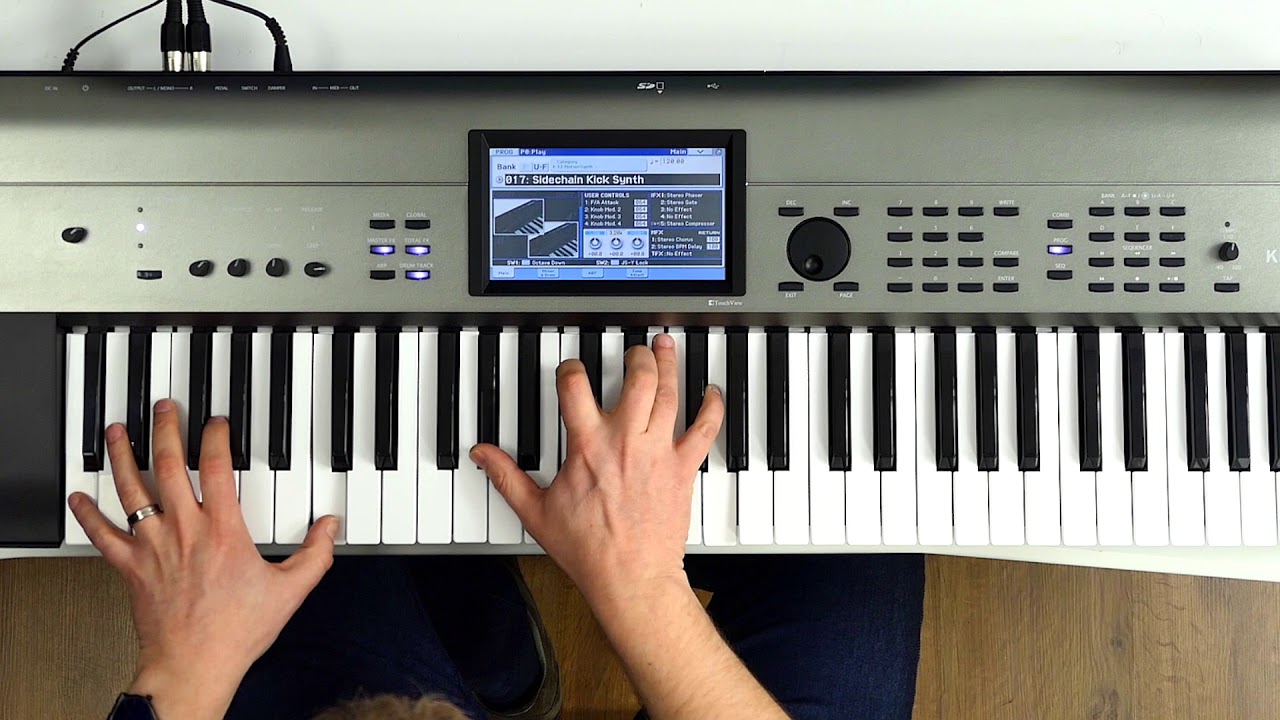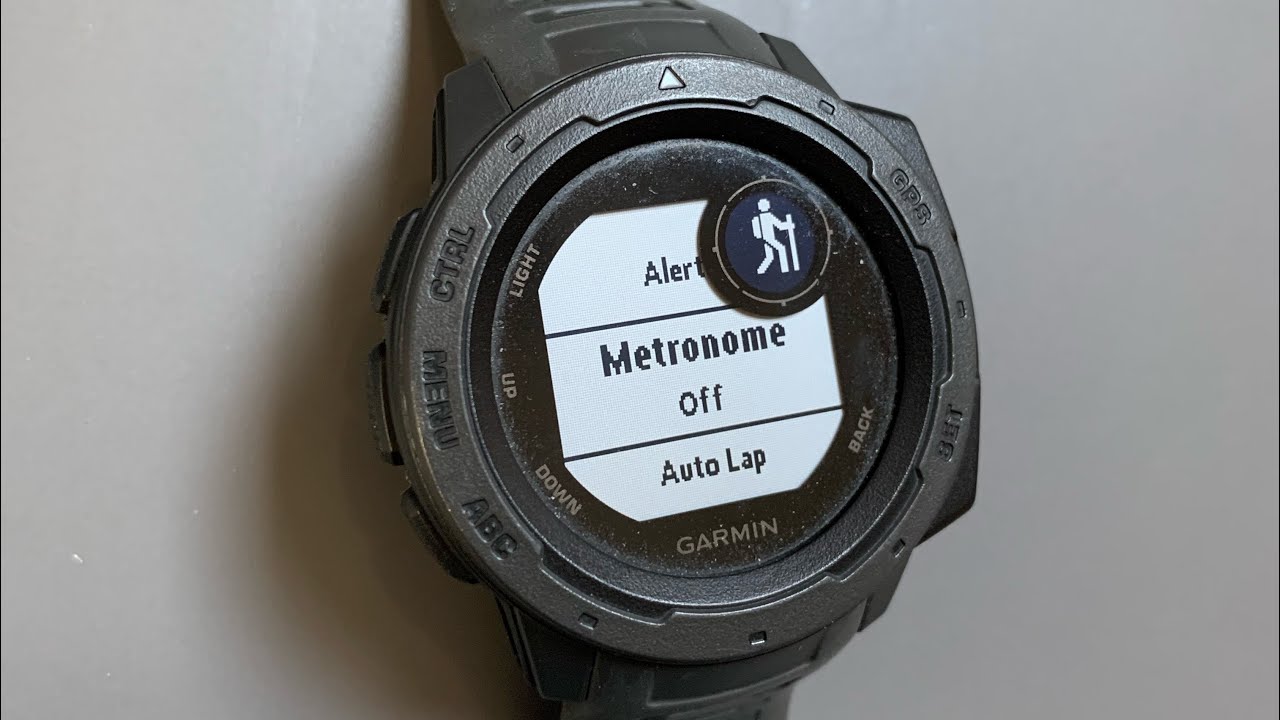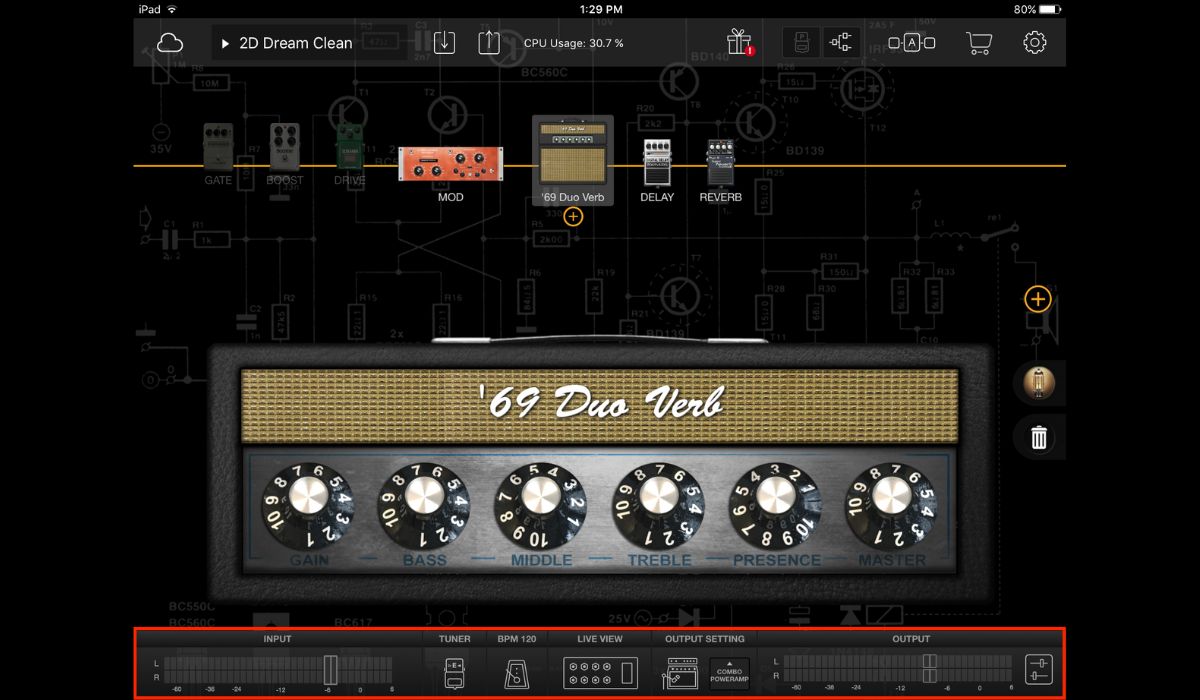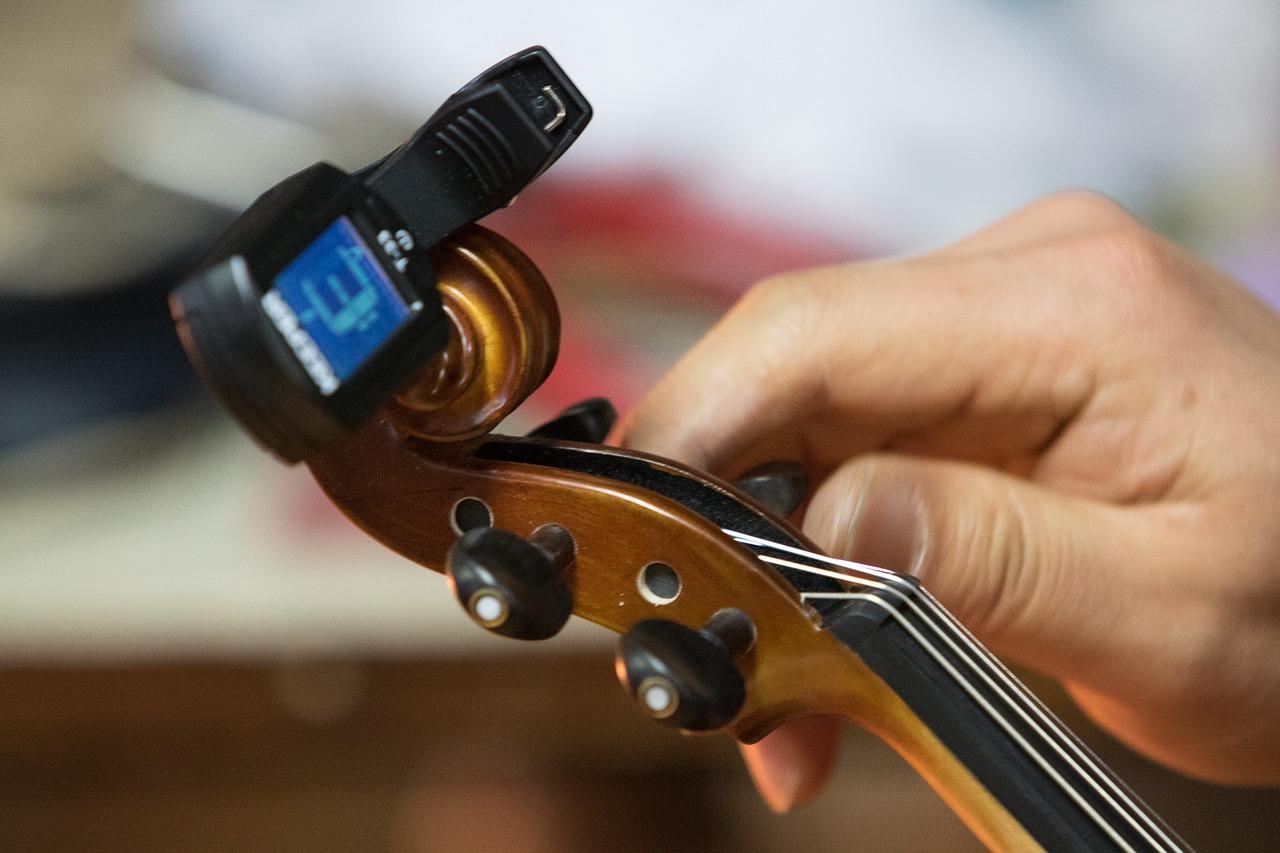Home>Production & Technology>Metronome>Why Use Metronome In Music
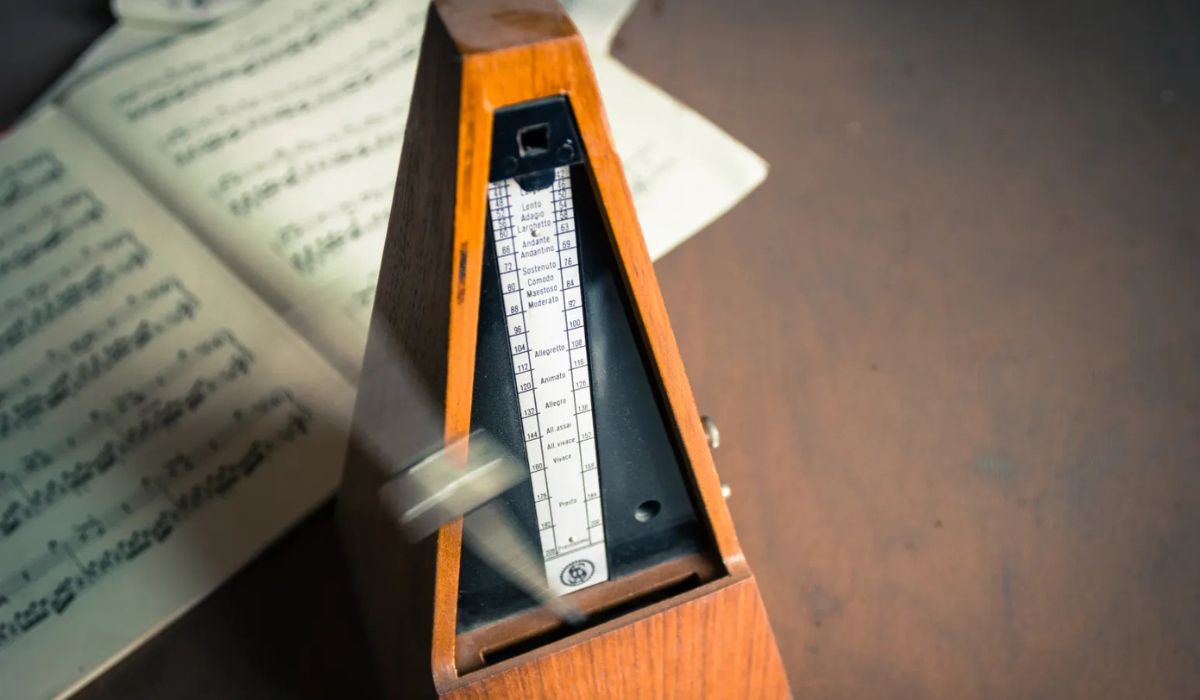

Metronome
Why Use Metronome In Music
Published: January 13, 2024
Discover the importance of using a metronome in music to enhance your rhythm and timing. Master your musical skills with the help of a metronome.
(Many of the links in this article redirect to a specific reviewed product. Your purchase of these products through affiliate links helps to generate commission for AudioLover.com, at no extra cost. Learn more)
Table of Contents
Introduction
When it comes to creating music, timing is everything. Whether you’re playing an instrument, singing, or composing, having a solid sense of rhythm is vital. However, keeping time can be a challenge, especially for beginners or musicians who are still developing their skills. That’s where a metronome comes in.
A metronome is a device that produces a steady, audible click or beep at a specific tempo. It serves as a musical tool to help musicians maintain a consistent tempo and improve their timing and rhythm. The use of a metronome can greatly benefit musicians of all levels, from beginners to professionals.
In this article, we will explore the benefits of incorporating a metronome into your music practice and performance. We will also discuss different types of metronomes and provide tips on how to use them effectively. So, let’s dive in and discover why using a metronome is essential for musicians.
Definition and Purpose of a Metronome
A metronome is a device or software tool used by musicians to maintain a consistent tempo while playing or practicing music. It typically produces a series of evenly spaced clicks, ticks, or beeps at a specified tempo. The tempo can be adjusted to suit the desired speed of the music, ranging from slow to fast.
The primary purpose of a metronome is to assist musicians in developing a sense of timing and rhythm. It acts as a reliable guide, helping musicians stay in sync with the beat and maintain a steady tempo throughout their performance.
Metronomes are extensively used in various musical contexts, including practicing scales, exercises, and songs. They are especially valuable for individuals learning to play an instrument, as they provide a consistent rhythmic foundation to play along with. Additionally, metronomes are widely used by composers during the composition process to establish and maintain the desired tempo for their musical pieces.
The concept of a metronome dates back to the early 19th century when it was first invented by the renowned German inventor Johann Nepomuk Maelzel. Initially, metronomes were mechanical devices that used a weighted pendulum or escapement mechanism to produce the beats. However, with advancements in technology, digital metronomes and metronome apps have become popular alternatives.
Overall, a metronome serves as a valuable tool for any musician, assisting in the development and improvement of timing, rhythm, and overall musical performance. It provides a consistent beat, allowing musicians to develop their sense of timing and maintain a steady tempo, leading to more polished and precise performances.
Benefits of Using a Metronome in Music
Using a metronome in your music practice and performance can bring forth a multitude of benefits. Here are some key advantages of incorporating a metronome into your musical journey:
- Improving Timing and Rhythm: One of the primary benefits of using a metronome is that it helps musicians develop a sense of timing and rhythm. By playing along with the steady beat provided by the metronome, musicians can train themselves to stay in sync with the tempo and accurately execute their music.
- Developing Consistency and Precision: Consistency is key to becoming a proficient musician. The metronome’s constant beat helps musicians develop the ability to play consistently at a specific tempo. This encourages precision and ensures that every note or beat is played accurately and in time.
- Enhancing Musical Interpretation: While a metronome emphasizes a consistent tempo, it also allows for flexibility and musical interpretation. Musicians can experiment with subtle variations in timing while still adhering to the overall tempo. This helps to develop a sense of musical expression and adds depth to their performances.
- Improving Overall Musical Performance: Incorporating a metronome into your practice routine can have a positive impact on your overall musical performance. It helps build muscle memory, improve hand-eye coordination, and enhance your ability to play with other musicians in an ensemble where timing is crucial.
- Building Confidence: As musicians grow more comfortable playing along with a metronome, their confidence in their sense of timing and rhythm increases. This confidence can then be transferred to playing with live musicians or in front of an audience, leading to more assured and polished performances.
It’s important to note that while using a metronome is highly beneficial, it should be used in conjunction with other musical practice techniques. It is not meant to replace the sense of musicality and expression but rather to act as a supportive tool in developing fundamental skills.
By incorporating a metronome into your music practice, you can hone your sense of timing, rhythm, and overall musicality. It is a valuable tool that can help musicians of all levels take their performances to new heights.
Improving Timing and Rhythm
Timing and rhythm are fundamental aspects of music that contribute to its overall feel and impact. Using a metronome is an excellent tool to help musicians improve their timing and rhythm skills. Here’s how:
1. Establishing a Consistent Pulse: When practicing with a metronome, musicians learn to internalize and synchronize their playing with a steady beat. This helps them develop a strong sense of pulse, ensuring that their music is played with a consistent rhythm throughout.
2. Developing Inner Timekeeping: Regularly practicing with a metronome helps musicians develop an internal sense of timekeeping. This means that even when they are not using a metronome, they can maintain a steady tempo and accurately keep time while playing with other musicians.
3. Strengthening Subdivision Skills: A metronome allows musicians to practice subdividing the beat into smaller fractions. By setting the metronome at a slower tempo or using its subdivisions feature, musicians can work on playing precise rhythms, such as triplets or sixteenth notes, within the framework of the beat.
4. Correcting Timing Errors: When playing without a metronome, it’s easy for timing errors to go unnoticed. However, when practicing with a metronome, any discrepancies in timing become immediately apparent. This allows musicians to identify and correct their timing errors, improving their overall accuracy.
5. Adapting to Different Tempos: A metronome allows musicians to practice playing at different tempos accurately. By gradually increasing or decreasing the metronome speed, musicians can expand their comfort zone and become proficient at playing music at various tempos.
6. Developing Syncopation and Offbeat Playing: Many musical genres incorporate syncopated rhythms or offbeat accents. Practicing with a metronome helps musicians develop the ability to play these complex rhythms accurately and in time with the underlying beat.
7. Improving Ensemble Skills: When musicians play in a band or ensemble, precise timing and rhythm are essential for synchronization. Practicing with a metronome helps musicians sharpen their skills, making them better equipped to stay in sync with other players and create a cohesive, tight-sounding group performance.
By improving timing and rhythm, musicians enhance the overall quality of their playing and become more adept at interpreting and conveying the intended musical feel. Using a metronome consistently can be a transformative tool in developing these fundamental musical skills.
Developing Consistency and Precision
Consistency and precision are crucial elements of musicality that separate good musicians from great ones. The use of a metronome is an effective method for developing these skills. Here’s how incorporating a metronome into your practice routine can help you achieve consistency and precision:
1. Playing in Time: A metronome provides a constant beat that acts as a reference for playing in time. By aligning your playing with the metronome’s clicks or beats, you develop a consistent sense of timing. This helps you stay on track and maintain a steady tempo throughout your performance.
2. Tempo Control: The metronome allows you to adjust the tempo to match the desired speed of the music. By starting with slower tempos and gradually increasing the speed, you can build your ability to play at faster tempos without sacrificing accuracy. This gradual progression develops precision in your playing.
3. Eliminating Rushing or Dragging: An inherent challenge for many musicians is rushing ahead of the beat or lagging behind it. The metronome acts as a constant reminder to stay in sync with the tempo, helping you eliminate these tendencies and play with precision.
4. Practicing Difficult Passages: When faced with technically challenging sections in a piece of music, a metronome can be a helpful tool to break them down and practice them at a slower tempo. By gradually increasing the tempo, you develop muscle memory and precision in executing those passages accurately and consistently.
5. Dynamic Precision: Alongside maintaining a steady tempo, the metronome can help you develop dynamic precision. By accenting specific beats or playing with softer or louder dynamics as indicated by the metronome, you can refine your control and expression within the framework of a consistent tempo.
6. Ensemble Playing: In ensemble settings, precision and consistency are vital for musicians to play together cohesively. By practicing with a metronome, you learn to synchronize your playing with other musicians, developing the ability to lock in with the ensemble’s rhythmic pulse.
7. Recording and Performance Preparation: When recording or performing, precision and consistency are crucial. Practicing with a metronome helps you prepare for these situations by engraining a steady tempo and accurate timing into your playing, ensuring a professional and polished performance.
Developing consistency and precision through the use of a metronome not only enhances the quality of your performances but also builds your confidence as a musician. By practicing with this valuable tool, you cultivate the discipline and skills necessary to deliver precise and consistent musical performances.
Enhancing Musical Interpretation
Musical interpretation is the art of bringing life and expression to a piece of music. While a metronome is often associated with strict timing, it can also greatly enhance your musical interpretation abilities. Here’s how incorporating a metronome into your practice routine can help:
1. Establishing a Foundation: A metronome provides a consistent beat that acts as a foundation for your musical interpretation. By practicing with a metronome, you internalize the underlying rhythm and tempo, which allows you to explore and experiment with different expressive elements while still maintaining a sense of discipline.
2. Articulation and Phrasing: The metronome can help you refine your articulation and phrasing by aligning your playing with its beats. You can use the metronome’s clicks or beats to guide your accents, staccato notes, legato lines, and other expressive markings, ensuring a clear and well-executed interpretation of the music.
3. Tempo Variation: While a metronome emphasizes a consistent tempo, it can also be used to develop a sense of tempo variation. By slowing down or speeding up the metronome at specific sections, you can explore different tempos and experiment with rubato, rallentando, accelerando, and other expressive tempo changes that enhance the emotional impact of the music.
4. Dynamic Expression: The metronome clicks or beats can serve as reference points for emphasizing dynamic changes. By aligning your dynamics with the metronome’s beats, you can create a more intentional and accurate expression of loud and soft passages, crescendos, decrescendos, and other dynamic nuances.
5. Playing with Intention: Practicing with a metronome encourages you to approach each note and phrase with intention. When every beat is accounted for and aligned with the metronome’s steady pulse, you become more mindful of the musical intentions of the composer, allowing you to deliver a more thoughtful and authentic interpretation.
6. Collaborative Performance: Playing with a metronome prepares you for ensemble or collaborative performances. It helps you internalize the precise timing that is essential for synchronizing your playing with other musicians, enabling a cohesive and expressive group interpretation of the music.
7. Developing Musical Taste: Practicing with a metronome allows you to refine your musical taste and judgment. By analyzing your playing against the metronome’s steady beat, you develop a critical ear for rhythmic and interpretive inconsistencies, enabling you to make more informed choices and ultimately enhancing your musicality.
By using a metronome as a tool to guide your musical interpretation, you create a balance between structure and artistic expression. It helps you develop a disciplined approach to rhythm and timing while providing a solid foundation for exploring and expressing the emotional depth of the music.
Improving Overall Musical Performance
Using a metronome can have a significant impact on your overall musical performance. It enhances various aspects of your playing and helps you deliver a more polished and professional performance. Here are some ways in which incorporating a metronome into your practice routine can improve your overall musical performance:
1. Sense of Timing and Pulse: Playing with a metronome helps you develop a precise and accurate sense of timing. This ensures that you stay in sync with the beat and maintain a consistent pulse throughout your performance. It allows you to execute complex rhythms with confidence, resulting in a more cohesive and engaging performance.
2. Technical Proficiency: Practicing with a metronome challenges your technical abilities, as you strive to play each note and phrase in perfect timing. This improves your accuracy, coordination, and finger dexterity, allowing you to tackle challenging passages with ease and finesse during your performance.
3. Tempo Control: A metronome helps you develop control over different tempos. By gradually increasing the speed, you enhance your ability to perform at faster tempos without sacrificing accuracy. This flexibility in tempo control enables you to adapt to different musical styles and genres, enhancing the versatility of your performance.
4. Ensemble Playing: Playing in a group or ensemble requires precise timing and synchronization. A metronome assists in developing the discipline and consistency needed to play effectively with other musicians. It cultivates your listening skills, enabling you to stay in perfect sync with the ensemble, resulting in a harmonious and well-coordinated performance.
5. Expression and Dynamics: While a metronome emphasizes a consistent tempo, it does not restrict your expressiveness. It provides a firm foundation that allows you to experiment with dynamics, phrasing, and interpretation. By aligning your expression with the metronome’s beat, you can create a more nuanced and powerful performance.
6. Confidence and Stage Presence: Practicing with a metronome builds your confidence, as it creates a solid framework for your performance. The precision and discipline developed through metronome practice allow you to feel more secure in your timing and musicality. This confidence translates onto the stage, enhancing your stage presence and overall performance quality.
7. Recording and Auditions: When recording or participating in auditions, precision and consistency are crucial. Playing with a metronome helps you maintain a consistent tempo and rhythm, ensuring a professional and flawless performance. It prepares you to deliver your best under pressure and increases your chances of success.
By using a metronome in your practice sessions, you elevate your musical performance to new heights. Its impact on timing, technique, ensemble playing, expression, and confidence results in a more refined and impactful delivery, leaving a lasting impression on your audience.
Different Types of Metronomes
Metronomes come in various forms, each with its own unique features and advantages. Here are some different types of metronomes you can choose from:
1. Mechanical Metronomes: These traditional metronomes are usually made of wood or plastic. They consist of a pendulum or weight mechanism that swings back and forth, producing an audible click at a set tempo. Mechanical metronomes have a classic appeal and provide a visual element with their swinging pendulum, making them a popular choice for musicians who appreciate a traditional look and feel.
2. Digital Metronomes: Digital metronomes have gained popularity due to their convenience and versatility. They are compact, portable devices that provide a wide range of features. Digital metronomes often come with an LCD or LED screen, allowing for easy tempo adjustment, beat subdivision options, volume control, and the ability to save presets. They may also include additional features such as a built-in tuner, stopwatch, or rhythm patterns.
3. Smartphone and Tablet Apps: With the widespread use of smartphones and tablets, many musicians now utilize metronome apps. These apps offer the same functionality as digital metronomes but are easily accessible on your device. They often come with additional features like customizable visuals, rhythm patterns, and the ability to synchronize with other devices for ensemble playing. Metronome apps are convenient, cost-effective, and allow for easy adjustment of tempo and other settings on the go.
4. Web-based Metronomes: Many websites now provide web-based metronomes that can be accessed directly from your computer or mobile browser. These metronomes offer basic tempo adjustment and provide an audible click or beep to help you maintain a steady rhythm. They are a handy option when a physical metronome or app is not readily available, making them suitable for quick practice sessions or when practicing at your computer.
5. Sound-based Metronomes: Sound-based metronomes are metronomes that produce specific sound patterns instead of traditional clicks or beeps. For example, some metronomes simulate the sound of a drum or a specific instrument to provide a more musical and immersive experience while practicing. These metronomes offer versatility in terms of sound options and can be particularly useful for musicians who prefer a more organic feel during their practice sessions.
6. Visual Metronomes: Visual metronomes are designed for musicians who prefer a visual cue rather than an audible click or sound. They utilize flashing lights, LED bars, or other visual indicators to indicate the beat and tempo. Visual metronomes are especially helpful for musicians who are deaf or hard of hearing, as they provide a clear visual representation of the rhythm.
Overall, the choice of metronome depends on individual preferences, convenience, and the desired features. Whether you prefer the traditional charm of a mechanical metronome, the versatility of a digital metronome or app, or the convenience of a web-based metronome, the important thing is to find a metronome that suits your needs and helps you improve your timing and rhythm skills.
Tips for Using a Metronome Effectively
While using a metronome is a valuable tool for improving your timing and rhythm, it’s important to use it effectively to maximize its benefits. Here are some tips to help you make the most out of your metronome practice:
1. Start Slow: Begin practicing with a metronome at a comfortable tempo. This allows you to focus on playing each note accurately in time with the beat. As you gain proficiency, gradually increase the tempo to challenge yourself and build your speed.
2. Use Subdivisions: Experiment with different subdivisions of the beat. Practice playing alongside the metronome’s subdivisions, such as eighth notes or triplets. This helps refine your timing skills and internalize complex rhythms within the context of the beat.
3. Emphasize Accents: Use the metronome’s accent feature or adjust the volume on certain beats to practice emphasizing specific notes or beats. This is particularly helpful for developing dynamic control and articulation, adding nuance and expressiveness to your playing.
4. Experiment with Different Styles and Genres: Vary your practice sessions by using the metronome for different musical styles and genres. This helps you adapt to different rhythmic patterns and phrasing techniques, expanding your musical versatility and understanding.
5. Incorporate Dotted Notes and Syncopation: Use the metronome to practice dotted note rhythms and syncopated patterns. This improves your ability to play off the beat, enhances your sense of rhythm, and adds rhythmic complexity to your playing.
6. Record Yourself: Use a recording device or app to record yourself playing along with the metronome. This allows you to analyze your performance, identify areas for improvement, and track your progress over time.
7. Vary the Beat Subdivision: Practice with the metronome set to different subdivisions within a measure. Start by playing along with the metronome on the downbeat only, then progress to different beats within the measure (e.g., beats 2 and 4). This helps develop a strong internal sense of timing and improves your ability to stay on beat in various musical contexts.
8. Practice Sight-Reading: Use the metronome to practice sight-reading exercises. Start at a slower tempo and gradually increase the speed as you become more comfortable. This sharpens your sight-reading skills and trains you to play accurately and confidently in real-time.
9. Experiment with Different Articulations: Use the metronome to practice different articulations, such as staccato, legato, or accentuated notes. Aligning your articulations with the metronome’s beat helps you develop a precise and controlled approach to playing each note.
10. Practice in Sections: Break down pieces or exercises into smaller sections and practice them with the metronome. Once you master each section individually, gradually piece them together, maintaining a consistent tempo throughout. This helps you build confidence and accuracy when playing longer musical passages.
Remember, the metronome is a tool to guide and improve your playing, but it’s important to balance structure with musical expression. As you become more comfortable with the metronome, don’t hesitate to experiment, interpret, and add your own musicality within the framework it provides.
Conclusion
Incorporating a metronome into your music practice and performance can have a profound impact on your skills and overall musicality. From improving timing and rhythm to developing consistency and precision, a metronome serves as an invaluable tool for musicians of all levels.
By practicing with a metronome, you develop a strong sense of timing, allowing you to stay in sync with the beat and execute complex rhythms accurately. It also helps you cultivate consistency and precision, enabling you to play with accuracy and polish.
A metronome not only enhances your technical skills but also enhances your musical interpretation. It provides a foundation for you to explore dynamics, phrasing, and tempo variations, allowing you to express your musical ideas with intention and creativity.
There are various types of metronomes available, including mechanical metronomes, digital metronomes, smartphone apps, web-based metronomes, and visual metronomes. Choose the type that best suits your needs and preferences to enhance your practice sessions.
To use a metronome effectively, start slow, explore subdivisions, experiment with different styles and genres, and record your practice sessions. Varying the beat subdivision and practicing sight-reading are also beneficial. Remember to balance structure with musical expression and to maintain a creative approach to your playing.
In conclusion, incorporating a metronome into your music practice is a wise decision that can greatly benefit your growth as a musician. It improves your timing, rhythm, consistency, precision, and overall musical performance. So, embrace the metronome as a valuable companion on your musical journey and watch your skills soar to new heights.





